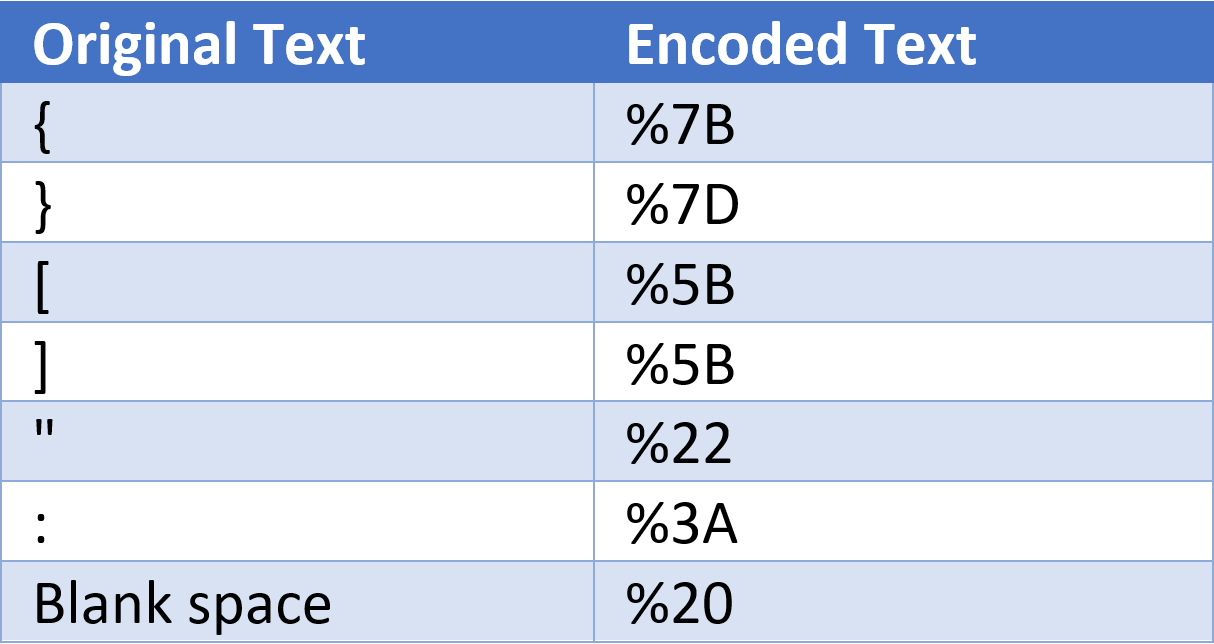Additional Concepts for Tabulate Queries
Limitations
Please be mindful of the following limitations when working with the microdata API.
Limitations for Get Queries
Queries for raw microdata with more than a few variables may not work unless you also restrict your geography or universe. This is because queries for raw microdata can request thousands or millions of records. When the data request is too large, it can cause the request to fail or time out.
If you are experiencing this issue, we recommend breaking up your API query into multiple API queries that only use a few variables at a time, or download the full set of data from the file transfer protocol (FTP) site for your dataset.
Limitations for Tabulate Queries
Queries for custom statistics may not satisfy all data needs due to some functionality limitations, challenges with the way variables are defined in a survey, and known defects.
- The process to recode variables is complex and subject to change. See the appendix for details.
- The microdata API does not currently have the functionality to:
- Calculate medians, percentages, or margins of error
- Apply inflation-adjustment variables like ADJINC to dollar values in ACS datasets
- Provide data over time in a single API query
- Calculate an average over time for monthly CPS datasets
- Results are being incorrectly formatted as exponents in API queries that only have variables in the rows. Until this issue is resolved, we recommend placing at least one variable in the columns for all tabulate queries.
- Place of work PUMAs (POWPUMAs), migration PUMAs (MIGPUMAs), and dual-vintage PUMAs are extremely difficult to use in tabulate queries because they are not available as geography predicates. ACS datasets with dual-vintage PUMAs include the 2015, 2014, 2013, and 2012 ACS 5-Year PUMS.
Contact Us
If you have questions about the microdata API, please email us at [email protected]
Appendix: How To Recode Variables
The microdata API offers the ability to recode variables to create custom categories that your statistics represent, rather than using the most detailed categories that are provided by default. This appendix walks through the process on how to recode variables. For a detailed explanation of why you would want to recode variables, please see the Recoding Variables section of this guide
Please be aware that the process to recode variables in the microdata API is complex and is subject to change in the future. We are considering ways to simplify the process to recode variables in the microdata API. If we implement a simplified syntax in the future, it will break the current way of recoding variables and users will need to update their microdata API queries to the new syntax for all of their queries that use recoded variables. To stay informed of these important API changes, please sign up for Census Data API email updates.
The microdata API allows you to recode variables using the format below. The parts of the example in bold will change depending on the variable and values you would like to use in your recode. The remaining characters are required parts of the parameter that you must include every time you recode a variable.
Recode Format
&recode+NEW_VARIABLE_ NAME={"b":"ORIGINAL_VARIABLE ", "d":[[CATEGORY 1],[CATEGORY 2]]}
In this structure:
- NEW_VARIABLE_NAME = A new label you must create for your recoded variable
- b = base variable
- ORIGINAL_VARIABLE = The name of the variable you recoded, as it appears on the variables page for a dataset in the microdata API
- d = definition
- [CATEGORY 1],[CATEGORY 2] = The definition of the number of categories for your recoded variable along with the values that each category represents
Example: Recoding AGEP to provide data for people age 0-11 and people age 12 and over:
&recode+AGEGROUPS={"b":"AGEP", "d":[[0,1,2,3,4,5,6,7,8,9,10,11],[{"mn":12,"mx":99}]]}
- AGEGROUPS = A new label for the recoded variable
- AGEP = The original name of the age variable in the 2019 ACS 1-Year PUMS dataset
- [0,1,2,3,4,5,6,7,8,9,10,11],[{"mn":12,"mx":99}] = The definition of the recoded categories and values. This example has two categories: The first provides data for people age 0-11 and the second provides data for people age 12 and over.
- mn = minimum value of range
- mx = maximum value of range






